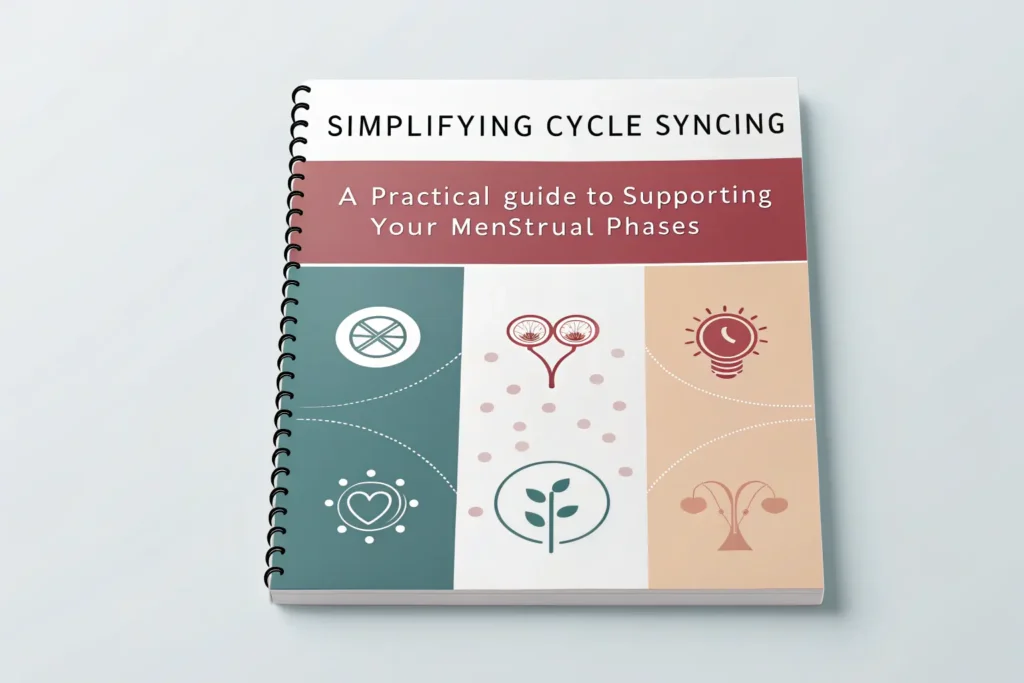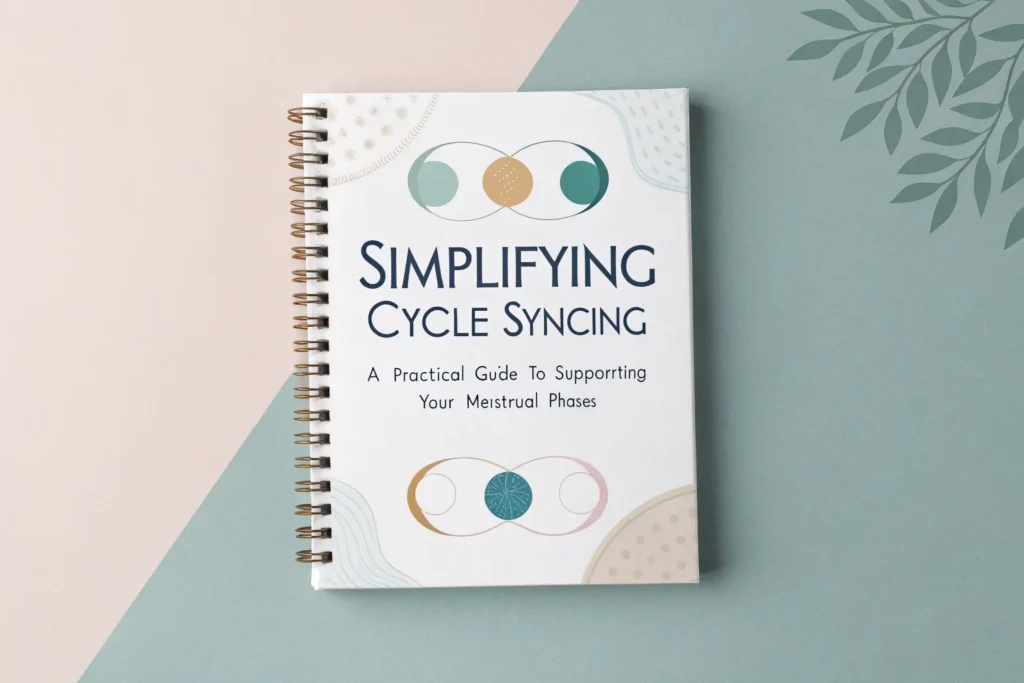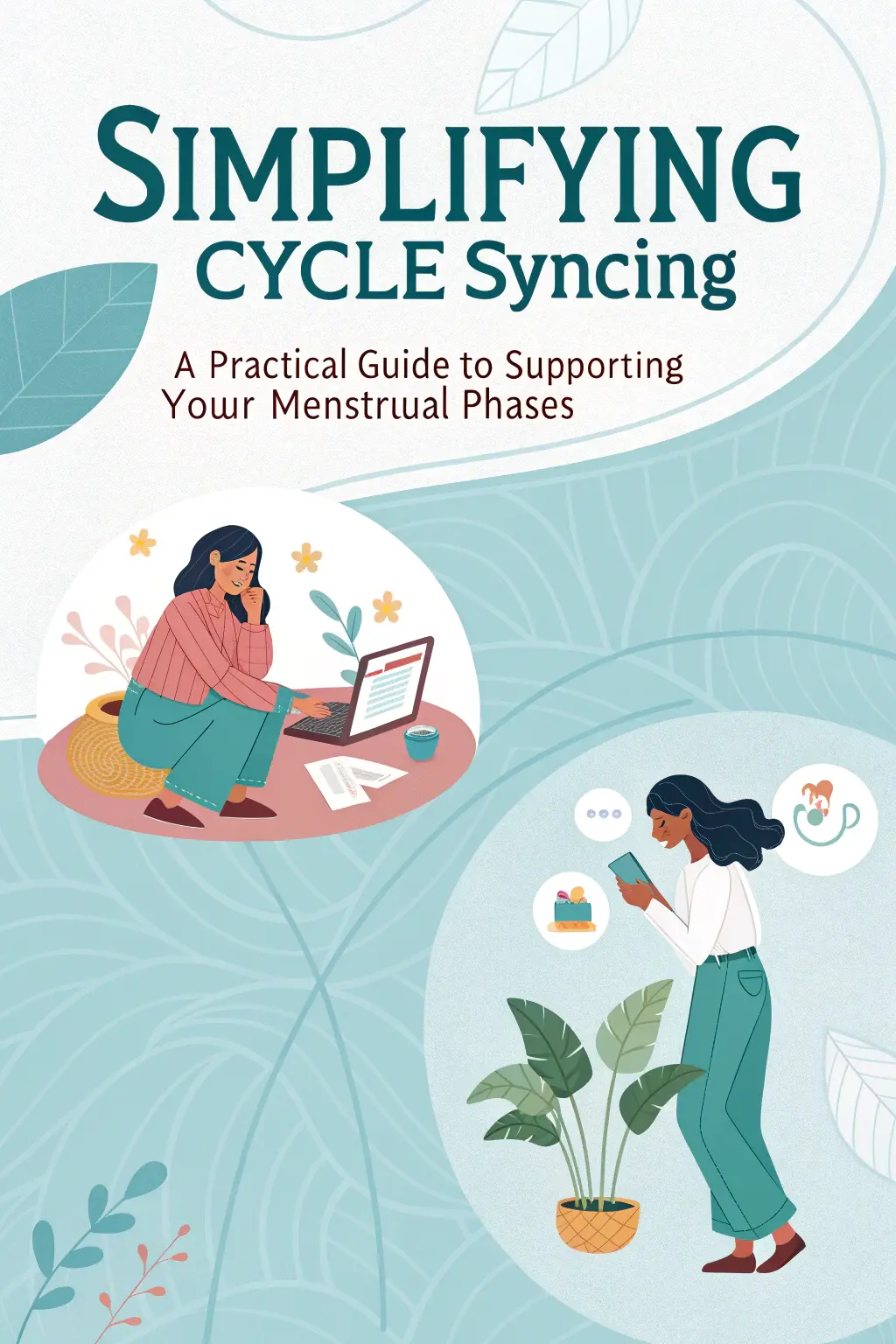Your menstrual cycle is more than just a monthly occurrence—it’s a natural rhythm that affects your energy, mood, and physical capabilities throughout the month. Cycle syncing is the practice of aligning your lifestyle, diet, and activities with the different phases of your menstrual cycle to optimize your wellbeing and work with your body’s natural fluctuations rather than against them.
Table of Contents
Understanding Your Four Phases
Your menstrual cycle consists of four distinct phases, each with its own hormonal profile and characteristics:
Menstrual Phase (Days 1-5) This is when your period occurs. Hormone levels are at their lowest, which can lead to fatigue and a natural desire for rest and introspection. Your body is literally shedding and renewing itself.
Follicular Phase (Days 1-13) Beginning with menstruation and continuing until ovulation, this phase is characterized by rising estrogen levels. You’ll likely feel more energetic, creative, and optimistic as the days progress.
Ovulatory Phase (Days 14-16) Peak fertility occurs during this short but powerful phase. Estrogen and testosterone surge, leading to increased confidence, communication skills, and social energy.
Luteal Phase (Days 17-28) After ovulation, progesterone rises while estrogen falls. This phase often brings a shift toward more inward focus, attention to detail, and eventual preparation for the next cycle.

Practical Cycle Syncing Strategies
Nutrition Throughout Your Cycle
Menstrual Phase: Focus on iron-rich foods like leafy greens, legumes, and lean meats to replenish what’s lost during menstruation. Warming foods like soups and herbal teas can provide comfort.
Follicular Phase: Support rising energy with fresh, light foods. Incorporate plenty of vegetables, lean proteins, and healthy fats. This is a great time for trying new recipes.
Ovulatory Phase: Your metabolism is higher, so you can handle more complex carbohydrates. Include anti-inflammatory foods like berries and omega-3 rich fish to support hormone production.
Luteal Phase: As cravings increase, focus on stabilizing blood sugar with protein-rich snacks and complex carbohydrates. Magnesium-rich foods like dark chocolate and nuts can help with mood.
Exercise and Movement
Menstrual Phase: Honor your body’s need for gentleness with restorative yoga, walking, or light stretching. This isn’t the time to push through intense workouts.
Follicular Phase: Your energy is building, making it perfect for trying new fitness classes or gradually increasing workout intensity. Cardio and strength training feel more manageable.
Ovulatory Phase: Peak performance time! This is when you can handle your most challenging workouts, from HIIT sessions to heavy lifting. You’ll likely feel strongest and most coordinated.
Luteal Phase: As energy wanes, shift toward moderate exercise like pilates, swimming, or strength training with lighter weights. Listen to your body’s signals.
Work and Productivity
Menstrual Phase: Use this reflective time for planning, reviewing, and setting intentions for the month ahead. Administrative tasks and organization work well now.
Follicular Phase: Channel increasing creativity into brainstorming sessions, starting new projects, and tackling challenges that require fresh thinking.
Ovulatory Phase: Your communication skills peak, making this ideal for presentations, networking events, difficult conversations, and collaborative projects.
Luteal Phase: Detail-oriented tasks shine during this phase. Focus on editing, analysis, completing projects, and preparing for the next cycle.
Self-Care and Social Energy
Menstrual Phase: Prioritize rest, warm baths, journaling, and quiet activities. It’s okay to say no to social commitments and focus on yourself.
Follicular Phase: You’ll naturally feel more social and open to new experiences. This is a great time for social activities and trying new things.
Ovulatory Phase: Your social battery is fully charged. Schedule important social events, dates, and activities that require high energy and confidence.
Luteal Phase: Energy for socializing decreases, so focus on close relationships and intimate gatherings rather than large groups. Increase self-care practices.
Getting Started: Simple Steps
- Track your cycle for at least three months using an app or journal to identify your personal patterns
- Start with one area rather than trying to change everything at once—perhaps begin with adjusting your exercise routine
- Pay attention to how you feel during different phases without judgment
- Be flexible and remember that every cycle can be different
- Adjust gradually and find what works for your unique body and lifestyle

Important Considerations
Cycle syncing isn’t about restricting yourself or feeling guilty if you can’t perfectly align with your cycle. Life happens, and sometimes you’ll need to push through regardless of where you are in your cycle. The goal is awareness and gentle support when possible.
If you’re on hormonal birth control, your natural cycle is suppressed, so traditional cycle syncing may not apply. However, you can still benefit from the general principles of varying your nutrition, exercise, and self-care practices throughout the month.
Remember that every person’s cycle is unique. What works for others may not work for you, and that’s completely normal. Some cycles will be more predictable than others, and external factors like stress, sleep, and life changes can all impact your patterns.
The Bottom Line
Cycle syncing is about developing a deeper relationship with your body and honoring its natural rhythms. It’s not about perfection or following rigid rules, but rather about creating more ease and flow in your life by working with your biology instead of against it.
Start small, be patient with yourself, and remember that this is a practice of self-discovery. The more you tune into your body’s signals, the better you’ll become at supporting yourself through each unique phase of your cycle.
Your menstrual cycle is a monthly opportunity to practice self-compassion and body awareness. By understanding and supporting your natural rhythms, you can transform what many see as an inconvenience into a source of strength and self-knowledge.





